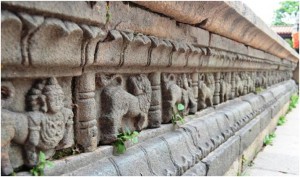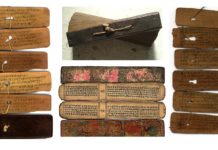Hindu Temple in China :- Quanzhou and its surrounding area consists of shrines or temples that according to historians is part network of number of Hindu shrines and temple.
At present, there are no Hindus in Quanzhou. But there previously existed a small Hindu community in late 13th century, mostly situated in southeastern part of China. The inscription of bilingual Tamil and Chinese-language has been associated with the remains of a Shiva temple of Quanzhou.
Shiva temple is one of the two south Indian-style Hindu temples.
The roots of the shrine do not lie in china but from the south India. The deity was either brought to Quanzhou by traders from Tamil Naidu, India who worked in Quanzhou somewhat 800 years ago, or perhaps crafted by local sculptors at their behest.
Most of the residents of the village think that deity is Guanyin the female Bodhisattva who is venerated in many parts of China. Every morning the local residents of the village pray, they light incense sticks and chant prayers unlike any deity one might find elsewhere in China.
The Hindu temple in the village collapsed 500 years ago but as local residents had belief that they still carry, goddess brought them good fortune, they dug through the ruins, saved the deity and rebuilt the temple.
The Historians believe that the Chedian shrine may have been a network of more than a 10-12 shrines or Hindu temples, including 2 big temples, built in Quanzhou & surrounding villages by a Tamil trader’s community who lived here during the era of Song dynasty (960-1279) & Yuan dynasty (1279-1368)
This port was one of the busiest ports around world at that time. It was thriving centre of regional maritime commerce

The history of Quanzhou’s temples and its Tamil links were forgotten history until 1930s when archaeologist Wu Wenliang from Quanzhou unearthed the carved stones showing perfectly rendered images of the god Narasimha (the incarnation of lord Vishnu half man half lion form), Elephant statues, and images of lord Shiva were also found bearing the pattern and style that was identical to temples Andhra Pradesh and Tamil Naidu from same time span.
The archaeologist received little or no attention as his country at that time was slowly emerging from the turmoil of the Japanese occupation, 2nd world war and the civil war. The statues and stones were placed in a museum more than decade after communists came to power in 1949. The Museum is known as the Quanzhou Maritime Museum now days.
It is difficult access that how many were destroyed or fell to ruin, and how many temples were there were as told by the museums vice curator Wang Liming to The Hindu. He further told that they have found them spread across so many different sites which stretch across more than a dozen locations located all over the city & in the surroundings.
Most of statues and sculptures today are displayed in the museum. Museum has now opened a special exhibit showcasing south Indian links with Quanzhou.
There is renewed interest has let financial backing from the local government to do more to showcase the 1000-year-old history links with south India that is largely forgotten in china and India.
Ms Wang says “There is still a lot we don’t know about this period, and we would welcome if we can get help from Indian scholars as there is need to study together. “The stones come from period of Yuan Dynasty in 13th century when close trade links were developed with south india.
She further said that they believe that work was done by the Chinese workers but the designs were brought by the traders.The earliest record of indian residing in Quanzhou dates back to the 6th century.
An inscription from the Song Dynasty time period was found on Yanfu temple about translated sutras from Sanskrit by monk Gunaratna, (popularly known as Liang Putong in China).
Huang Yishan, the caretaker of the temple says that the most unique part of the temple is it’s the inscriptions. They have for generations taken care off and owned the land on which the temple was built. He was bit down telling that most of his countrymen unaware about this part of history
Just few kilometres away from Kaiyuan temple which have have become a part of Buddhist temple. The temple consists of very high Shiva lingam and can be seen in the centre of the Bamboo Stone Park.




